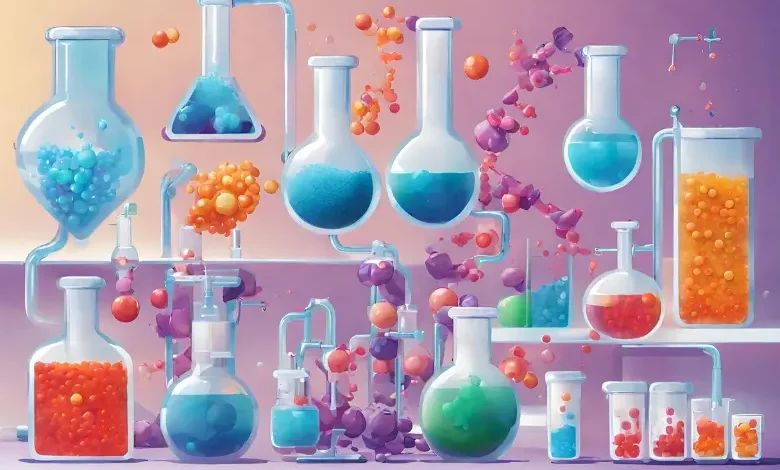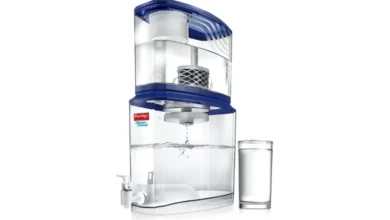Understanding Ion Exchange Resins: A Comprehensive Guide

Ion exchange resins are indispensable tools in industries ranging from water treatment to pharmaceuticals, providing efficient purification and separation of ions. These versatile materials, with their unique ability to selectively exchange ions in solution, form the backbone of various technological processes. In this comprehensive guide, we delve into the intricate workings, properties, applications, and future prospects of ion exchange resins.
Introduction to Ion Exchange Resins
Ion exchange resins are versatile materials used in various industries for purification, separation, and recovery processes. These resins possess unique properties that enable them to selectively exchange ions in a solution. Understanding the fundamentals of ion exchange resins is crucial for optimizing their applications across different fields.
What are Ion Exchange Resins?
Ion exchange resins are insoluble polymers containing functional groups capable of exchanging ions with surrounding solutions. These functional groups can be either positively or negatively charged, depending on the desired ion exchange process. The most common types of ion exchange resins include cation exchange resins, anion exchange resins, and mixed-bed resins.
Structure of Ion Exchange Resins
Ion exchange resins typically consist of a three-dimensional network of cross-linked polymer chains. The functional groups responsible for ion exchange are attached to these chains. The size, porosity, and chemical composition of the resin beads influence their ion exchange capacity and selectivity.
Mechanism of Ion Exchange
The ion exchange process involves the replacement of ions in a solution with ions of similar charge present on the resin surface. This exchange occurs through reversible chemical reactions between the functional groups on the resin and the ions in the solution. The specific mechanism depends on the type of resin and the nature of the ions involved.
Cation Exchange Process
In cation exchange resins, positively charged functional groups, such as sulfonic acid or carboxylic acid groups, attract and exchange cations in the solution. Common cations targeted for exchange include sodium (Na+), calcium (Ca2+), and magnesium (Mg2+).
Anion Exchange Process
Anion exchange resins contain negatively charged functional groups, such as quaternary ammonium or tertiary amine groups, which attract and exchange anions in the solution. Common anions targeted for exchange include chloride (Cl−), sulfate (SO4^2−), and nitrate (NO3−).
Properties of Ion Exchange Resins
Several key properties influence the performance and suitability of ion exchange resins for specific applications:
Ion Exchange Capacity
Ion exchange capacity refers to the maximum amount of ions that a resin can exchange per unit volume or weight. It is determined by the number of functional groups present on the resin beads. Higher ion exchange capacity allows for more efficient ion removal or recovery.
Selectivity
Selectivity refers to the preference of a resin for certain ions over others during the exchange process. The selectivity of ion exchange resins depends on factors such as the type of functional groups and the chemical properties of the ions involved. Achieving the desired selectivity is essential for targeted purification or separation processes.
Physical Stability
Physical stability relates to the mechanical strength and durability of ion exchange resins. Resins should maintain their structural integrity and resist fragmentation or degradation during handling, regeneration, and prolonged use. Factors such as bead size, cross-linking density, and pore structure influence the physical stability of resins.
Chemical Stability
Chemical stability refers to the resistance of ion exchange resins to chemical degradation or reaction with the surrounding environment. Resins must remain chemically inert under various pH conditions, temperatures, and exposure to harsh chemicals to ensure consistent performance over time.
Applications of Ion Exchange Resins
Ion exchange resins find widespread use across numerous industries due to their versatility and effectiveness in various processes:
Water Treatment
In water treatment applications, ion exchange resins are employed for softening, demineralization, and deionization of water. Cation exchange resins remove hardness ions such as calcium and magnesium, while anion exchange resins remove dissolved salts and impurities.
Chemical Processing
Ion exchange resins play a vital role in chemical processing industries for purification, separation, and catalysis. They are utilized in processes such as chromatography, metal recovery, and purification of pharmaceuticals and food products.
Nuclear Power Generation
Ion exchange resins are used in nuclear power plants for purification of reactor coolant and removal of radioactive contaminants. Specialized resins with high selectivity for specific radionuclides are employed for effective nuclear waste treatment.
Food and Beverage Industry
In the food and beverage industry, ion exchange resins are utilized for deionization of water, decolorization of beverages, and removal of undesirable ions and impurities. These resins help maintain product quality and meet regulatory standards.
Regeneration and Maintenance
Ion exchange resins require periodic regeneration to restore their ion exchange capacity and efficiency. Regeneration involves washing the resin bed with concentrated solutions of counter ions to replace the adsorbed ions. The regeneration process depends on the type of resin and the specific application.
Factors Affecting Ion Exchange Resin Performance
Several factors influence the performance of ion exchange resins in practical applications:
pH
The pH of the solution affects the ionization state of functional groups on the resin surface, thereby influencing ion exchange kinetics and selectivity. Optimal pH conditions ensure maximum resin efficiency and stability.
Temperature
Temperature influences the rate of ion exchange reactions and the physical properties of ion exchange resins. Higher temperatures generally accelerate ion exchange processes but may also affect resin stability and longevity.
Flow Rate
The flow rate of the solution through the resin bed affects mass transfer kinetics and residence time, impacting the efficiency of ion exchange processes. Proper flow control is essential to ensure uniform ion distribution and avoid channeling or breakthrough.
Resin Particle Size
The size of resin particles determines the surface area available for ion exchange and affects diffusion rates within the resin bed. Smaller particle sizes may enhance mass transfer but can also increase pressure drop and require finer filtration.
Types of Ion Exchange Resins
Ion exchange resins are classified based on their chemical composition, functional groups, and intended applications:
Cation Exchange Resins
Cation exchange resins contain acidic functional groups that exchange positively charged ions (cations) in solution. Common functional groups include sulfonic acid (–SO3H) and carboxylic acid (–COOH).
Anion Exchange Resins
Anion exchange resins contain basic functional groups that exchange negatively charged ions (anions) in solution. Common functional groups include quaternary ammonium (–N(CH3)3+) and tertiary amine (–NH(CH3)2+).
Mixed-Bed Resins
Mixed-bed resins consist of a mixture of cation and anion exchange resins in a single column. They are used for highly purified water applications where simultaneous removal of cations and anions is required.
Advances in Ion Exchange Technology
Recent advancements in ion exchange technology have led to improved resin performance, enhanced selectivity, and expanded application possibilities:
Ion-Selective Resins
Ion-selective resins are designed to exhibit high specificity for target ions, allowing for selective removal or recovery of desired species from complex solutions. These resins
are tailored for applications such as heavy metal removal and trace ion analysis.
Macroporous Resins
Macroporous ion exchange resins feature larger pore structures and increased surface area compared to conventional resins. These characteristics facilitate faster mass transfer and higher binding capacities, making them suitable for challenging separation tasks.
Functionalized Nanomaterials
Functionalized nanomaterials, such as nanostructured polymers and hybrid organic-inorganic particles, offer unique advantages for ion exchange applications. Their small size, high surface-to-volume ratio, and tunable properties enable precise control over ion exchange processes and improved performance.
Environmental Implications and Sustainability
The use of ion exchange resins has significant environmental implications, both positive and negative:
Water Conservation
Ion exchange resins play a crucial role in water treatment and resource conservation by enabling the efficient removal of contaminants and pollutants from wastewater streams. They contribute to the production of clean water for drinking, industrial processes, and agricultural use.
Chemical Waste Generation
The regeneration and disposal of spent ion exchange resins can lead to the generation of chemical waste and environmental pollution if not managed properly. Efforts to minimize waste generation and develop sustainable regeneration methods are essential for mitigating environmental impacts.
Energy Consumption
The energy consumption associated with ion exchange processes, including resin regeneration and solution pumping, contributes to overall operational costs and environmental footprint. Implementing energy-efficient technologies and process optimization strategies can help reduce energy consumption and greenhouse gas emissions.
Future Directions in Ion Exchange Research
Ongoing research efforts in the field of ion exchange aim to address current challenges and explore new opportunities:
Smart Resins
Smart ion exchange resins with stimuli-responsive properties are being developed for dynamic ion capture and release applications. These resins can undergo reversible changes in ion exchange capacity or selectivity in response to external stimuli such as pH, temperature, or light.
Biopolymer-Based Resins
Biopolymer-based ion exchange resins derived from renewable sources offer sustainable alternatives to traditional synthetic resins. These resins exhibit biodegradability, lower environmental impact, and potential for functionalization with bioactive molecules for specific applications.
Nanotechnology Integration
Integration of nanotechnology into ion exchange materials opens up possibilities for enhanced performance, reduced material usage, and tailored functionalities. Nanoscale modifications, such as surface coatings, nanoporous structures, and nanocomposite formulations, enable precise control over ion exchange processes.
Conclusion
Ion exchange resins play a critical role in a wide range of industrial, environmental, and scientific applications, offering versatile solutions for ion separation, purification, and recovery processes. By understanding the principles of ion exchange mechanisms, resin properties, and practical considerations, researchers and engineers can harness the full potential of these materials to address current challenges and drive innovation in various fields. With ongoing advancements in technology and increasing emphasis on sustainability, ion exchange resins are poised to continue shaping the future of water treatment, chemical processing, energy production, and beyond.






